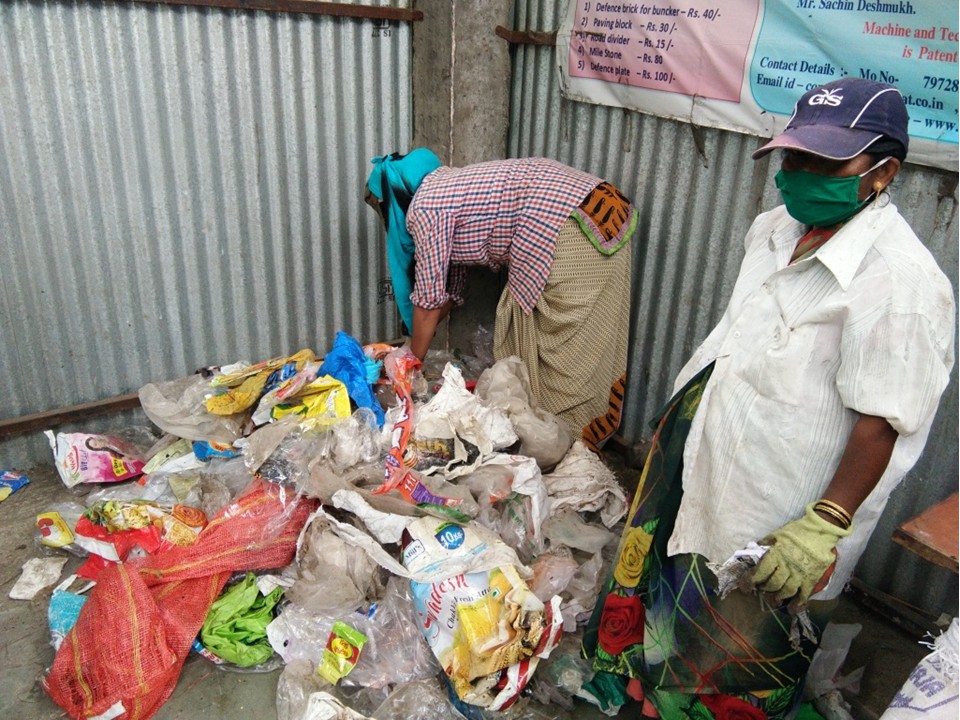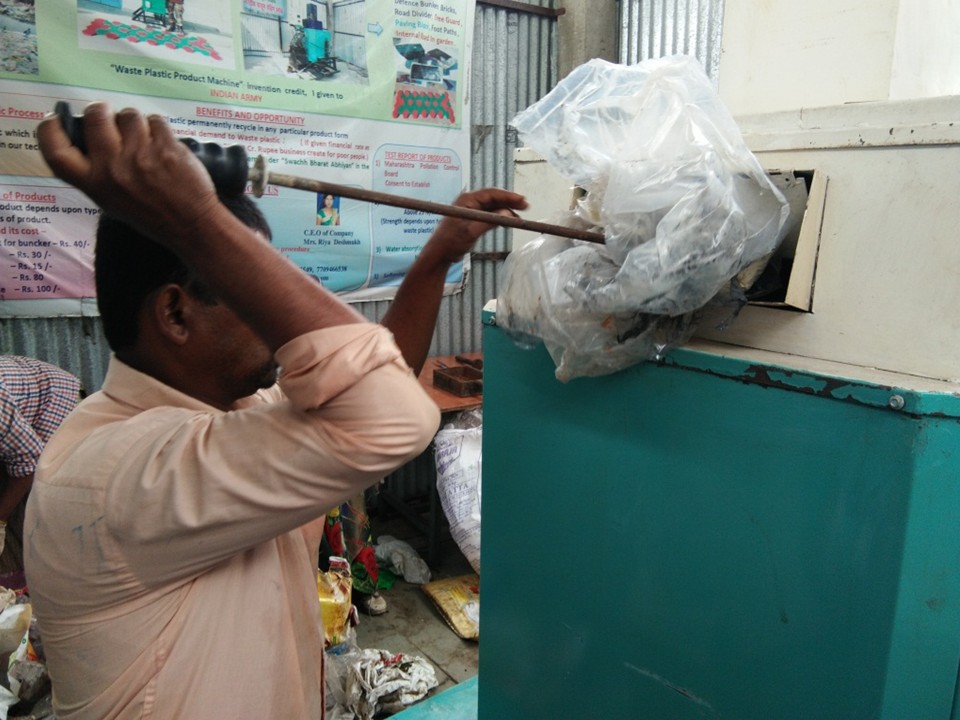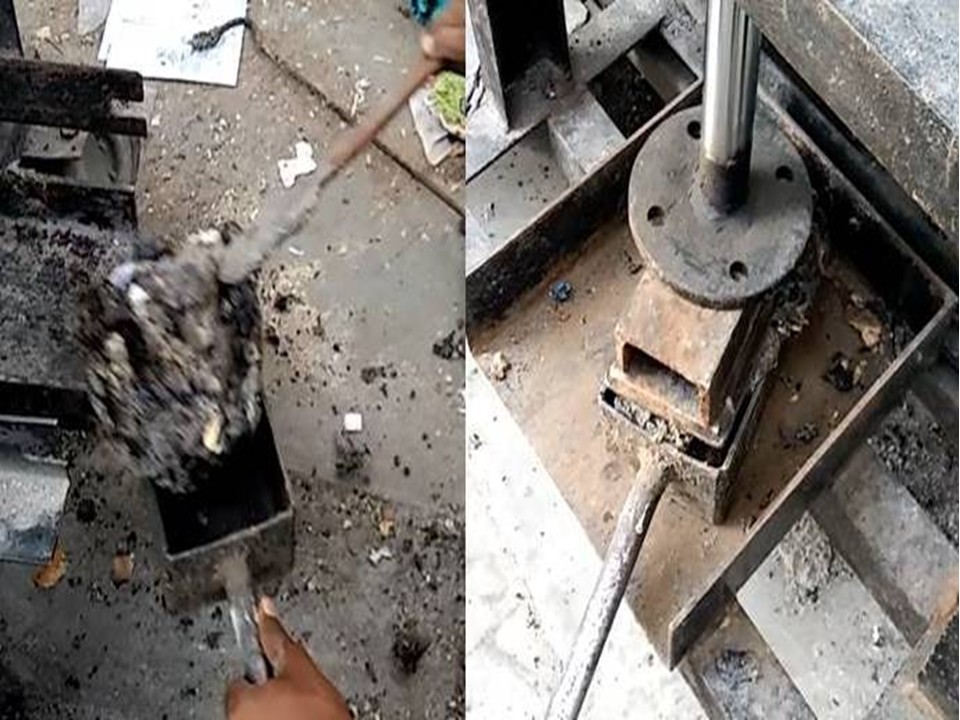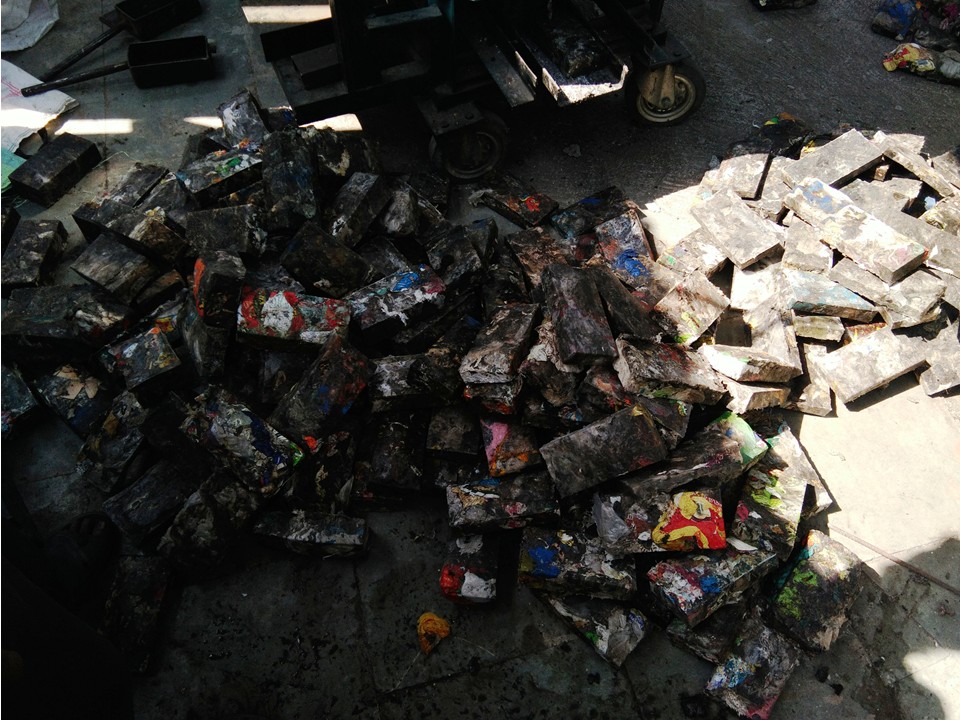
The WPPM Process: Transforming Plastic Waste into Eco-Friendly Products
“Our Waste Plastic Product Machine (WPPM) converts plastic waste into valuable eco-friendly products. This happens through a systematic process. It involves key stages like collection, heating, molding, and finishing. Below is a detailed, step-by-step explanation of this
plastic recycling process.”
Step – I : Plastic Collection and Sorting
“The first step involves careful plastic collection and sorting:”
A. Material Selection: Collect any type of waste plastic materials. This includes carry bags, packaging wrappers, multilayered plastics, and food containers. All materials must have a thickness below 150 microns.
B. Cleaning Process: Ensure the plastic waste is free from dirt, oils, and organic residues. You can process mixed plastic waste directly. However, you must remove non-plastic items like paper or other organic waste.
C. Weighing: Measure plastic quantities using the provided measurement box. This helps maintain consistency in the final product’s weight.
Step – II : Feeding and Melting the Plastic
“This crucial step involves carefully feeding and melting the plastic waste within the Waste Plastic Product Machine (WPPM):”
A. Preheating the Machine: Set the machine’s temperature. It should be between 225°C and 260°C for optimal melting.
B. Plastic Feeding: Insert the plastic into the heating chamber in small batches. A wooden stick helps to push the plastic inside for even distribution.
C. Thermomesh Process: The plastic converts into a semi-liquid form within five minutes. This process maintains its structural integrity without burning the material.
Step – III : Molding and Compression
“After melting, the plastic moves to the molding and compression stage:”
A. Mold Preparation: Collect the melted plastic in a collection tray.
Then, pour it into custom molds. These molds are designed for bricks, paver blocks , and road dividers.
Hydraulic Press System: Apply high pressure using the hydraulic machine to set the shape and increase strength.
B. Cooling Process: Dip the pressed plastic mold in cold water for 15 seconds to solidify the product.
Step – IV : Finishing the Product
“The final step involves carefully finishing the product:”
A. Demolding: Carefully remove the solidified product from the mold.
B. Polishing and Grinding: Use a grinder machine to smooth rough edges. This helps achieve a high-quality finish.
C. Color Coating (Optional): You can apply paint or coatings for added aesthetics and protection. This depends on the product’s intended application.
Step – V : Final Inspection and Packaging
“The final stage involves quality inspection and careful packaging of the finished products:”
A. Quality Testing: Perform strength tests on the products. For example, our plastic products have a compressive strength greater than 25 N/mm².
B. Packaging: Pack the finished products securely. This prepares them for shipping or storage, ensuring they are ready for immediate use.
Key Products Created with Our WPPM Machine
“Our Waste Plastic Product Machine (WPPM) transforms plastic waste into a variety of useful and eco-friendly products:”
Plastic Bricks: These are ideal for walls, pathways, and landscaping projects.
Paver Blocks: Our paver blocks are suitable for parking lots, pavements, and gardens.
Road Dividers and Signboards: These provide lightweight yet durable traffic solutions.
Eco-Friendly Impact of WPPM Operations
“Our Waste Plastic Product Machine (WPPM) process truly makes an eco-friendly impact. It permanently locks plastic waste into reusable forms. This action helps reduce landfill accumulation. Furthermore, it assists in reducing environmental pollution. The process also provides cost-effective construction materials.”
Comprehensive WPPM Operating Process
The Waste Plastic Product Machine (WPPM) efficiently transforms plastic waste into eco-friendly products through a systematic plastic recycling process. This process begins with the collection of mixed municipal dry
plastic waste below 150 microns, which can be processed directly after removing non-plastic items. Next, the plastic is heated to an average of 225°C–260°C, converting it into a unique semi-liquid form without burning the material. Subsequently, a
hydraulic press molds this material into durable products like plastic bricks, paver blocks, road dividers, and tree guards. After a brief 15-second cooling in water, the products undergo finishing with a grinder, with optional color coating. These resulting
plastic products boast a high compressive strength greater than 25 N/mm². Importantly, this entire operation permanently locks
plastic waste into reusable forms, actively reducing landfill accumulation and environmental pollution, while also operating with low noise levels.





